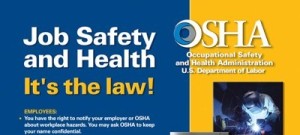The scene looks much the same among union hotel workers: bold employers, drawn-out bargaining, and unions launching intermittent short strikes to keep up pressure. Hilton  is now UNITE HERE’s target because the union judges that company most likely to move—a shift in strategy after months of rolling strikes and pickets against the Hyatt chain.
is now UNITE HERE’s target because the union judges that company most likely to move—a shift in strategy after months of rolling strikes and pickets against the Hyatt chain.
The union hopes to establish a pattern at the bargaining table with Hilton that other hotels will follow.
Chicago hotel workers authorized strikes at four Hilton-owned or -operated properties. They struck the Hilton Chicago for three days in October, coordinating with Hilton workers in Honolulu and San Francisco. Those strikes ended October 19, but more may be on the way.
Workers in Toronto took advantage of the Toronto International Film Festival in September to gain visibility for their struggle. Rolling one-day strikes at three hotels, including festival headquarters, caused actors Martin Sheen and Emilio Estevez to join the boisterous picket line. The blare of vuvuzelas added to picket-line noise.
Workers rolled out a red carpet and offered passersby the opportunity to have their photo taken with a hotel worker. Inside, workers spotted the housekeeping manager doing bell work.
Six additional one-day strikes have cascaded through Toronto hotels since the film festival. And 500 workers walked out of the Delta Chelsea, a large downtown conference hotel, on October 28. Delta Chelsea workers say they’ll stay out for two weeks.
Cristal Cruz-Haicken of UNITE HERE Local 75 said the two-week strike was necessary because “they weren’t even taking us seriously†at the bargaining table.
Unstable work schedules and job security are a serious problem. Feliz Serrano, a server, said he has worked there 30 years and still usually only gets 30 hours of work a week, but only if he works six days in a row.
Room attendant Jian Ying Liu said the hotel has tried to get rid of her three times because of injuries she received in her 18 years of work there.
Several conferences immediately moved because of the strike.
LOCKING IN THE RECESSION
In the U.S., Hilton workers have been working without a new contract since August 2009. They charge their employer with trying to lock the recession into their wages and workloads even as the hotel industry recovers profitability.
Blackstone, the private equity group that controls Hilton, upped third-quarter profits by 23 percent, to $340 million. This April, the New York Federal Reserve wrote off $180 million of Blackstone’s debt, allegedly to create jobs.
But the hotel chain is trying to squeeze more work from the existing staff. Hilton is proposing that workers who currently clean 14 rooms a day clean 20, with the result that some workers will be laid off.
UNITE HERE members call Hilton’s push to increase their workload the “dirty rooms†program, pointing out that Hilton is reassuring workers they won’t have to meet the same high standards of cleanliness when they’re required to clean 40 percent more rooms.
The average Local 2 member in San Francisco makes $30,000 a year, and if Hilton gets its way workers will soon be paying $173 a month for family health care coverage.
According to Local 2 staffer Riddhi Mehta-Neugebauer in San Francisco, workers have foregone raises over the years, preferring to maintain affordable health coverage. The new $173 per month amounts to a huge takeaway.
Hilton is resisting the union’s proposal that the company put aside an extra 12 cents per hour for pensions, which, UNITE HERE calculates, would mean the difference between a $900 and a $1,200 monthly pension.
Meanwhile, management’s pay is up. According to a Wall Street Journal survey, Blackstone’s executive team got a 12 percent pay increase this year.
For more:Â http://labornotes.org/2010/11/unions-reach-short-strikes-stop-concessions
(Visited 118 times, 1 visits today)












